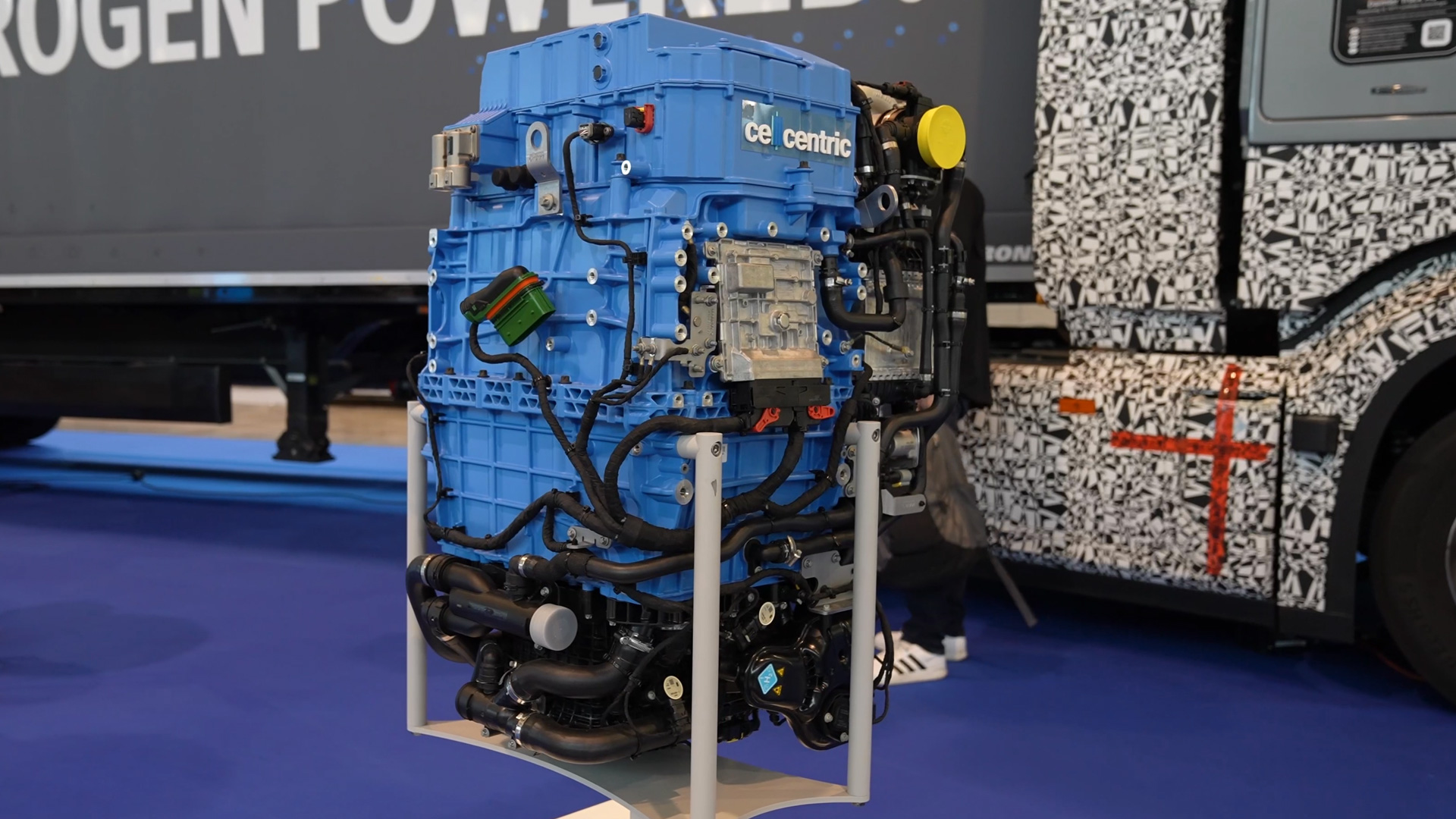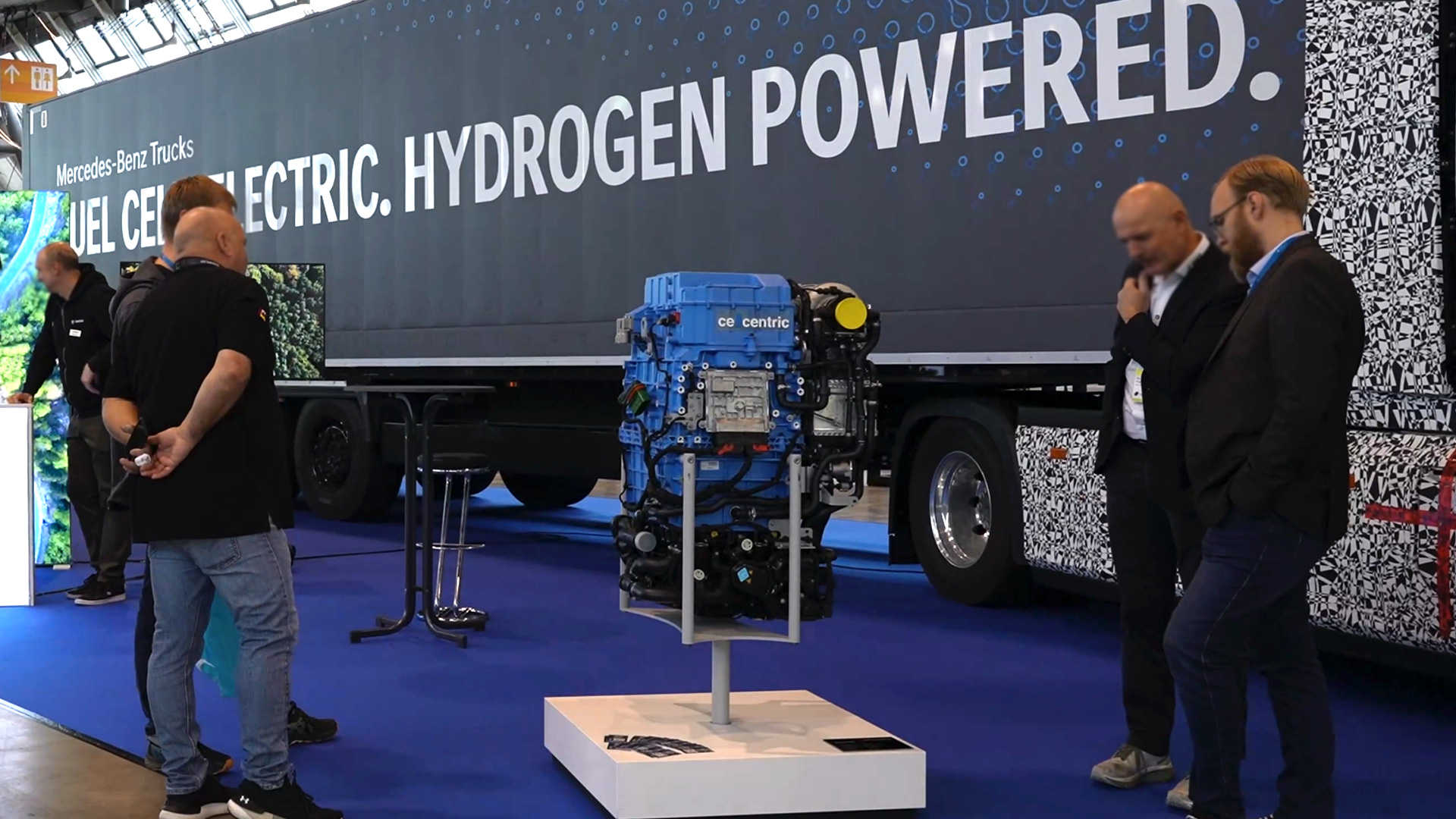Cellcentric is at the center of a technological turning point: The company develops and produces fuel cell systems that are designed to make heavy-duty transport climate-neutral. As a joint venture between Daimler Truck and Volvo, Cellcentric brings together two heavyweights in the commercial vehicle industry, which together cover more than half of the European and American truck market. This strong industrial base enables the consistent development of high-performance fuel cell technologies – for road transport as well as stationary energy applications.
At the heart of every system is the fuel cell itself – compact, robust, and designed for high continuous loads. Compared to batteries, it offers clear advantages when it comes to long ranges and heavy payloads. While battery-powered trucks are limited by weight and charging times, fuel cells enable distances of over 1,000 kilometers with a full load. Two years ago, Cellcentric and Daimler Truck set a world record: a fully loaded 40-ton truck covered more than 1,000 kilometers in one go – a milestone for emission-free freight transport. The fuel cell demonstrates that it is not a competitor to the battery, but rather a complement to it. Both systems will coexist in the future – batteries for short distances and urban logistics, fuel cells for long distances and heavy loads.

The EU is significantly tightening CO₂ requirements for commercial vehicles by 2030. Truck manufacturers will have to reduce emissions by 45 percent compared to today – a target that cannot be achieved with battery-powered vehicles alone. Heavy-duty transport in particular is considered the biggest driver of emissions. This is where fuel cells can really show their strengths: long range, short refueling times, and high energy efficiency. Cellcentric is working flat out to bring this technology into series production. The path to achieving this is closely linked to the development of a suitable hydrogen infrastructure. Without a comprehensive network of filling stations, its use will remain limited. The number of hydrogen filling stations is still manageable, but this is not an obstacle for trucks – thanks to their long range, a few strategically placed stations are enough to cover long distances.
Fuel cells can only be as strong as the network that supplies them. The industry is currently working on expanding the hydrogen supply. While passenger cars require a dense network of filling stations, freight transport requires significantly fewer locations – the long range of the vehicles allows for targeted corridors along important transport axes. The goal is to create an infrastructure that extends beyond regional clusters and secures European freight transport in the long term. Hydrogen filling stations along the main transport axes should enable the widespread use of emission-free trucks. Cellcentric sees this development as a decisive factor for market ramp-up – because only when availability and economic efficiency are right can the technology prevail.

In addition to the technology, economic viability will determine the success of fuel cells. For truck operators, the total cost of ownership—i.e., the total costs of purchase, operation, and energy—is what counts. The price of hydrogen plays a key role here. Neither production nor distribution are yet at high volume, which means that costs are higher than for diesel. Only with increasing production volumes and a growing market can fuel cells become price-competitive. Government subsidies are therefore essential during the transition phase – for example, in the form of investment grants, tax breaks, or toll exemptions. These measures are intended to accelerate the market ramp-up and bring the technology to a wider audience by 2030. From that point on, according to Cellcentric's perspective, the market will regulate itself – driven by economies of scale and falling hydrogen costs.
Cellcentric's goal is clear: to decarbonize heavy-duty transport while making it economically viable. Fuel cells are intended to replace diesel where batteries reach their limits. In this way, the company is making a key contribution to the implementation of European climate targets in the transport sector. With its combination of technological expertise, industrial strength, and global reach, Cellcentric is positioning itself as a key player in the hydrogen mobility of tomorrow. The path to this goal lies in innovation, infrastructure, and cooperation—between industry, politics, and energy suppliers. Only in this way can the transformation of heavy-duty transport succeed and hydrogen become what it promises to be: the energy source of a clean future.